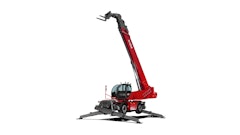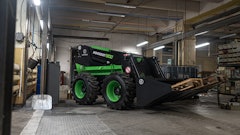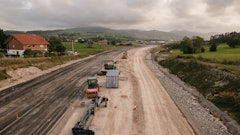Fayetteville, located in mid-southern Tennessee, sits right along US Highway 64. This community of 7,000 was in the midst of a major highway reconstruction project for two years. In total, more than 266 miles of the highway was widened to a four-lane route.
Mid South Utility Contractor, located in Baxter, TN, was contracted to relocate all of the water, sewer and gas lines along a six-mile stretch of US 64 that passed through Fayetteville. Crews installed two and a half miles of sewer, three miles of force main sewer, three miles of natural gas lines, two and a half miles of waterline and 42 manholes.
"The majority of the lines were open cut, but we had to complete 20 bores ranging from 60 to 120 feet in length under the highway," says Mike Herren, president of Mid South Utility Contractor. "The 12- to 30-inch diameter bores accounted for 30 percent of our work on the project."
Herren has worked in rock conditions for a long time, but not at the precision required on the gravity sewer lines. He contacted McLaughlin and they came in and customized their rock system to his project.
The McLaughlin rock system features a pilot head with three roller cones set up to cut 6 1/2 inches on the outside diameter (OD). Behind the pilot head are two 5-foot long stabilizers with ribbing on them to bring them up to the OD of the pilot head. When you start to drill forward, the stabilizers fill the void created by the pilot head and steady it for an accurate shot. The pilot head and stabilizers are attached to a drill stem that allows water to flow through to the head, flushing the cuttings and keeping the pilot head cool.
The sewer bores began by creating and shoring a pit 20 feet deep by 32 feet long. The pit was set 10 feet back from the new road. Once the pit was set the boring machine was positioned and the pilot head was squared. The crew began boring and continued to add drill stem until they reached the other side of the road. When they reached the receiving pit at the other side of the road, they continued to rotate the pilot head forward and began pulling the stem back out of the hole.
When the pullback was complete, the rib stabilizers and pilot head were left in the hole and a 16-inch reamer head was attached. The reamer head featured a series of roller cones up to the OD. On the back side of the reamer, the crew attached a standard auger and the first 20-foot section of casing. The crew began to ream the hole and continued to pump water from the receiving pits back into the boring machine to keep the head cool and flush the cuttings back into the pit. The 20-foot sections of casing were welded together as the bore progressed.
The pilot hole is the slowest part of the process and took a couple of days to complete and a total of four days to complete the process.



























